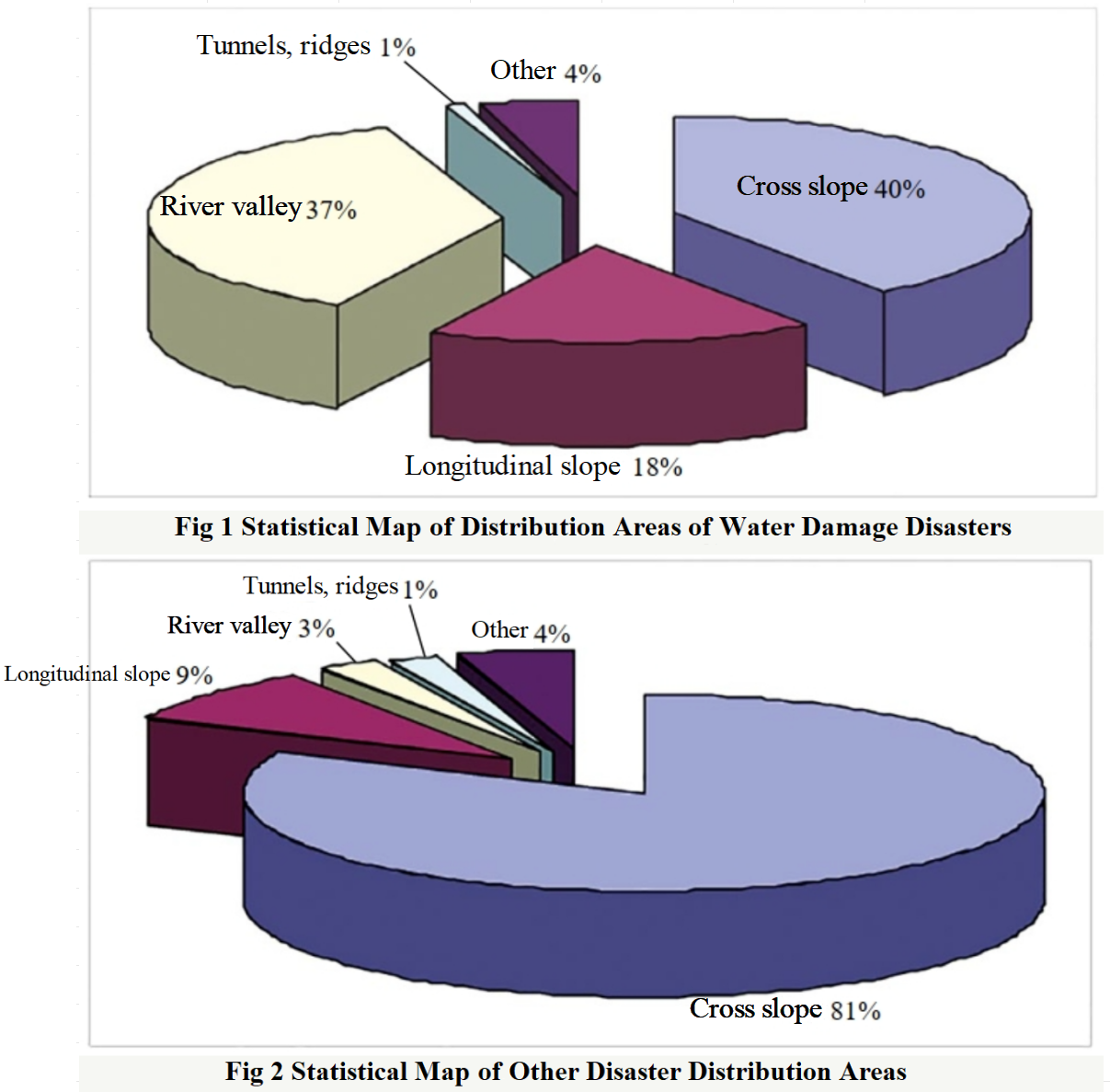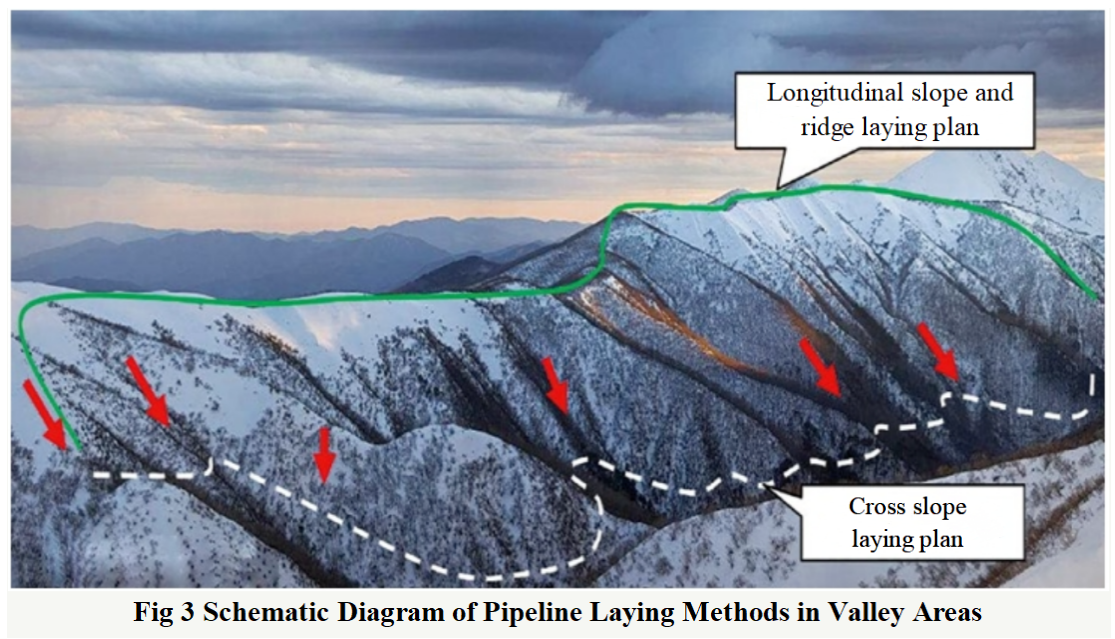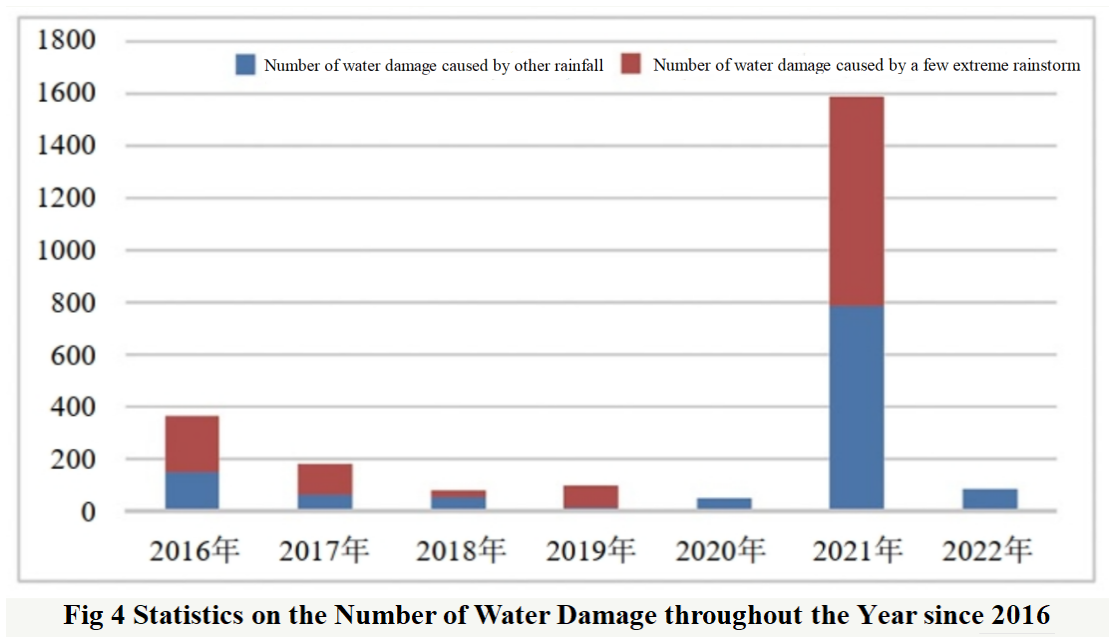Difficulties and Countermeasures in Emergency Rescue of Pipelines in River and Valley Areas
Abstract
This article systematically analyzes the development characteristics of geological hazards in river and valley areas and their hazards to pipelines, and proposes the difficulties in emergency rescue work in early warning, pipeline safety status discrimination, and rescue operations. Measures have been proposed from the perspectives of pipeline process operation, pipeline protection, and disaster prevention and control, providing suggestions for improving geological disaster prevention and control in river and valley areas, and providing reference for future pipeline disaster prevention and rescue operations.
China's oil and gas pipelines have a long route and a wide distribution area. They almost cross all landform units in China, and the natural geographical conditions such as terrain, topography, and meteorology along the pipeline, as well as the complex and diverse geological backgrounds of geological formations, structures, hydraulic engineering, and environmental geology. Every year during the flood season, geological disasters occur frequently in areas such as high mountains and valleys, river crossings, and loess distribution areas, and oil and gas pipelines are inevitably threatened by geological disasters. For this reason, pipeline enterprises need to spend a huge amount of manpower and material resources on emergency pipeline rescue every year.
1. Characteristics of Disasters in River and Valley Areas
1.1 Development of Geological Hazards
The pipeline laying methods in mountainous areas can be divided into horizontal slope laying section and vertical slope laying section. Taking the 4084 geological disasters identified in the Se'ninglan, Lanchengyu, Zhongwu, and Lanzhengchang pipelines from 2005 to 2010 as an example, more than 90% of water damage disasters occur in river and valley areas, while other disasters such as landslides are mainly distributed in the horizontal slope laying section of mountainous areas (Figure 1 and Figure 2).

1.2 Scale of Geological Hazards
The development of geological hazards is closely related to their own gravitational potential energy and water kinetic energy. The terrain in the valley area is steep, with a large drop, and the accumulated potential energy of the rock and soil volume is high. The water flow speed and kinetic energy in the river area are high, resulting in a large scale and high risk of geological disasters in these areas, and serious consequences of accidents. According to statistics, landslides are the main cause of oil and gas pipeline breakage. Mudslides, floods, and water damage to river channels often lead to long-distance suspension of pipelines, and in severe cases, pipe breakage may occur; Collapse can easily cause pipeline depression and deformation, affecting its service life; Slope water damage, terrace water damage, and loess collapse often result in exposed and suspended pipelines.
1.3 Relationship between Pipeline Laying Methods and Disasters
The impact of geological disasters on pipelines is closely related to the laying method of pipelines. The cross slope laying zone of pipelines in valley areas is an area where geological hazards such as landslides and rock mass movement are concentrated, and disasters such as floods and debris flows in the ditch can have a significant impact on the pipelines on the slope. Under the working conditions of laying pipelines along longitudinal slopes and ridges, due to the influence of rainfall, soil erosion at the top of the ditch can also cause insufficient burial depth of the pipeline and a small amount of suspended exposed pipes. However, overall, the harm is relatively small (Figure 3).

When pipelines are laid along unstable river channels, they are greatly affected by riverbed oscillation and gravel riverbed. The swaying and diversion of the riverbed can cause pipelines that were originally on the shore to enter the river, leading to insufficient burial depth and floating pipes in the air. Water related operations greatly increase the difficulty of emergency rescue work during the flood season; The rock and soil structure of the gravel river bed is loose, extremely unstable, and easily washed away by floods, which can also cause the above phenomena.
1.4 The Relationship between Rainfall and Disasters
Rainfall is the main factor inducing geological disasters. In recent years, extreme rainfall has occurred frequently in northern China, which is mainly manifested in the decrease of rainfall days, the increase of rainstorm days and the concentration of rainfall. According to statistics, the vast majority of major disasters are caused by rainfall in extreme weather conditions such as typhoons, which is also a very clear pattern in recent years. It can be seen from the analysis of flood damage of a company in flood season in recent years that the number of water damage caused by a few extreme rainstorm accounts for more than half of the total number of water damage (Figure 4).

2. Difficulties in Emergency Rescue in River and Valley Areas
2.1 Difficulty in Identifying and Warning
(1). Pipeline accompanying optical cables have a warning effect on geological disasters, but there are errors in accurately locating the interruption location, especially in mountainous areas where on-site positioning often takes several hours, which affects the efficiency of rescue efforts. During the typhoon, the optical cable was interrupted in multiple places, and the location of the interruption at both ends can be quickly found, but it is very difficult to locate the interruption point between the two ends.
(2). In case of typhoon, extreme rainstorm and other weather conditions, the infrastructure is severely damaged, the traffic roads and communication are interrupted, and with potential risks such as collapse and flood, it is difficult for the line patrol personnel to go to the site in time for troubleshooting. Short distance emergency rescue points can now be inspected using drones, but the flight distance is limited, and the final investigation results still need to be confirmed by personnel entering the site.
2.2 Difficulty in Distinguishing Pipeline Safety Status
(1). During the flood season, the water flow was turbulent and personnel were unable to enter the water to check the suspended condition of the pipeline. Prior to the 2022 flood, multiple techniques such as single beam, multi beam, and side scan sonar were used to detect the current situation of the pipeline at the Yellow River crossing point through testing unmanned ships and sonar equipment. However, due to the turbid river water, the results were not ideal.
(2). When a floating pipe occurs in a river pipeline, it is difficult to determine the length of the underwater floating pipe, the swinging mode of the pipeline, the magnitude of stress, and the fatigue state of the pipeline. Currently, only some stress detection and monitoring can be carried out at the closest possible position, but it can only reflect the situation at that point and cannot clearly investigate the stress distribution status of the entire pipeline.
2.3 Shortage of Rescue Resources
Emergency rescue is to seize resources. Typhoons and other disasters cause regional scale disasters, and multiple industries such as transportation, power, and communication are carrying out emergency operations. This often leads to shortages of large machinery such as excavators, bulk materials such as stones and concrete, as well as manpower, making emergency pipeline rescue difficult.
2.4 Difficulty in Entering the Emergency Rescue Site
When emergency rescue is carried out in valley areas, the locations are generally far from traffic arteries, making it very difficult for large equipment and bulk materials to enter the site, and it is necessary to build access roads. After floods and heavy rainfall, the soil becomes saturated and soft, making it difficult to provide sufficient bearing capacity, resulting in a long and difficult construction period for the access road, which slows down the rescue progress.
2.5 Restricted Rescue Sites and Measures for Water related Operations
During river flooding, the water depth and flow velocity are high, posing significant safety hazards to rescue workers. The poor terrain of the riverbed, loose sediment structure at the bottom, and low bearing capacity also bring great risks and difficulties to the construction of scaffolding and equipment entry operations. Emergency rescue requires controlling risks in the shortest possible time, avoiding pipeline fatigue strength failure, and restoring production. However, due to limitations such as construction period, site, and resource supply, many methods and technologies are difficult to implement.
3. Emergency Response in River and Valley Areas
3.1 Be well Prepared and actively Respond
Carry out inspections of key flood control areas before the flood season, improve emergency plans, reserve necessary flood control materials, and establish a social support for large-scale rescue equipment and bulk rescue materials. Actively respond to extreme weather conditions, major floods in reservoirs and rivers, deploy rescue forces in advance if necessary, intensify on-site inspections, identify signs of disaster activities, and detect, prepare, and initiate risks early. After confirming the danger situation, sufficient rescue resources should be quickly mobilized and the construction of access roads should be initiated as soon as possible to create conditions for rescue operations.
3.2 Rescue Process Measures
Pipeline leakage can cause serious pollution to the surrounding environment such as river water and soil. When there is a risk of pipeline leakage, corresponding process measures need to be taken according to the conveying medium. For oil pipelines, measures such as reducing pressure, stopping transportation, closing the valve chamber in the direction of oil supply, and closely monitoring changes in pipeline pressure can be taken. For pipelines with the risk of condensation, if conditions permit, the oil type can be adjusted, and if necessary, the pipeline should be cleaned. For gas pipelines, measures such as pressure reduction, shutdown, and venting can be taken, and combustible gas monitoring work should be carried out at the rescue site.
3.3 Emergency Measures for Disaster Bodies
The main disaster body of river channel water damage is floods. Firstly, it is necessary to communicate with the relevant management departments of the upstream reservoir, adjust the reservoir flood discharge plan, lower the downstream water level, and leave enough time and space for emergency operations. Secondly, engineering measures should be taken to protect the pipeline, such as constructing cofferdams, diversion dams, and river dredging, to change the direction of water flow and reduce the impact of floods on the pipeline. At the same time, space should be left for large-scale equipment to enter the site for operation, or temporary silt dams, gabions, and riprap measures should be built downstream of the pipeline to raise the height of the riverbed, so that the pipeline can be buried underground again, playing a role in protecting the pipeline.
3.4 Protective Measures for Pipelines
During river emergency rescue, measures such as driving steel pipe piles, building scaffolding, and placing balance bags downstream can be taken to support and reinforce the pipeline, control its displacement and vibration, and avoid material fatigue and strength failure of the pipeline. In addition, it is necessary to monitor the safety status of pipelines, including pipeline displacement monitoring, strain monitoring, and pipeline leakage monitoring, in order to grasp the on-site situation in real time.
3.5 Safety and Environmental Protection Measures
Attention should be paid to personnel safety and environmental protection during emergency rescue. The medium transmission pressure of oil and gas pipelines is high, and pipeline leakage monitoring should be done well to avoid endangering the safety of rescue workers. Water related operators on site should be strictly managed to avoid safety accidents. During the flood season, meteorological and flood monitoring should also be carried out in the rescue area and surrounding areas to ensure the safety of rescue workers. Oil pipeline leakage can cause serious pollution to the surrounding environment. Multiple oil interception points can be set up downstream to reduce the impact on the surrounding environment such as river water and soil in case of extreme situations.
4. Conclusion
To more economically, reasonably, safely, and efficiently control the risk of pipeline disasters in river and valley areas, reduce the difficulty of rescue, and ensure pipeline safety, it is recommended to improve and enhance from the following aspects:
(1). Improve the quality standards of pipeline construction and fundamentally reduce the occurrence of dangerous situations. Minimize the laying of pipeline cross slopes as much as possible to avoid long-distance laying and crossing of pipelines in unstable river channels such as riverbed swings.
(2). After the pipeline is put into operation, geological hazard investigation and identification should be actively carried out to reduce the risk of geological hazards. By comprehensively utilizing remote sensing, fiber optic vibration and other technologies, the early identification rate of geological hazards such as landslides can be improved, and early detection and treatment can be carried out. For unstable riverbed laying sections, measures such as changing the route and improving defense standards can be taken.
(3). Introduce new methods, technologies, and equipment, draw on innovative technologies and experiences from industries such as highways and railways, and turn them into our own, in order to improve the emergency rescue efficiency of pipelines in river and valley areas.
